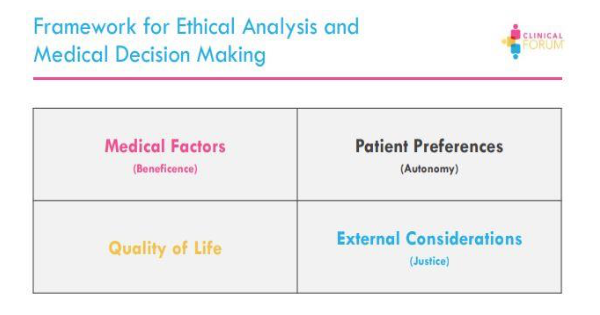The Impact of COVID-19 on GI Patients and Practices was an eye opening session that shed light on the effects the coronavirus has on GI patients. Adam VanDeusen shared his study covering how crucial colonoscopies and endoscopies are in the management and diagnosis of inflammatory bowel disease, among many other illnesses and cancers, an area that is being profoundly affected by the COVID-19 pandemic. Timely diagnostic and management procedures, such as colonoscopies, are critical to ensure that patients receive the treatment they deserve in a quick and timely manner, whether that be an IBD diagnosis, management of IBD including a switch in medication, screening for anemonas and colorectal cancer. I’m sure many of you reading this with inflammatory bowel disease or other digestive diseases can relate to how the pandemic has hindered your healthcare and treatment. This reiterates why studying how to decrease backlogs and improve patient care in a critical part of every digestive illness, including colonoscopies and endoscopies, are so important.
VanDeusen discussed the reality of COVID-19 and its detrimental effect on colonoscopies needed for patients. The COVID-19 pandemic has caused a high number of cancelled or deferred endoscopies and colonoscopies since March 2020 due to health system policies, staff and facility re-deployment, and distancing measures. For my fellow IBD readers, I’m sure this doesn’t come as a surprise to you. Across the world, many colonoscopies and endoscopies were delayed or cancelled, causing stress, chaotic management of treatment, and prolonged diagnoses. In addition to IBD, colonoscopies to detect colorectal cancer, a type of cancer that can be prevented and treated when undergoing timely diagnostic colonoscopies, have been backlogged and delayed. VanDeusen dives into simulation predictors that forecast solutions to reduce the backlog and wait times patients are experiencing to ensure diagnostic treatments via colonoscopies and endoscopies are available for patients. As an alternative to colonoscopies, many gastroenterologists have been using a high-sensitivity stool-based test (FIT) as a way to detect colorectal cancer to prolong screening wait time from five to seven years if the results come back negative.
Benefits of high-sensitivity stool-based testing:
Alternative to colonoscopies to detect colorectal cancer
Lessens wait times
Extend time between colonoscopy screening
The three strategies in the simulation are Overtime, Exchange, and Extend. Through Exchange, GI clinics utilized the stool-based tests as an alternative to colonoscopies for patients that were referred strictly for colorectal cancer screening. Stool-based testing resulted in reducing the wait times for patients undergoing colonoscopy screening referrals as well as allowing quicker wait times for patients with no alternative diagnostic treatments. The second strategy, Extend, extended screening colonoscopies for patients with 1-2 adenomas on previous colonoscopy exams from five to seven years. Lastly, the Overtime strategy added one weekend endoscopy day to result in quickly seeing more patients for endoscopies and colonoscopies.
VanDeusen highlights that the study aimed to quantify the impact of evidence-based strategies to improve endoscopy access during the COVID-19 pandemic. The method created a model of a single endoscopy unit with an integrated healthcare system using a discrete event simulation in C++. The model began in March 2020 for 150 weeks and each simulation was replicated 100 times to ensure accuracy. To simplify the model used, when a patient arrives to book a colonoscopy and that patient is unable to secure a scheduled appointment, that patient is then put into the queue. This study looked at four different simulations to provide the best approaches for GI clinics to achieve the lowest wait time, Extend, Exchange, Overtime, and a combination.
VanDeusen explains that the study shows that triaging patients effectively will result in performing more diagnostic and high-risk surveillance procedures in a timely fashion. Without offloading strategies, prolonged queues and wait times develop, especially for screening colonoscopies. The Overtime strategy of one weekend endoscopy day increased colonoscopy volume and had the greatest impact on the number of screening procedures completed. The Exchange strategy reduced overall wait times more than Extend and Overtime. Combining strategies is the most effective solution, especially given the fact that doctors and healthcare staff have been continuously overworked during the pandemic.
Takeaways:
Effective triage will reduce colonoscopy backlog and queues
Doctors working overtime is the single best strategy to reduce colonoscopy wait times
Combining strategies will best reduce colonoscopy wait times and allow more patients to be seen in a timely fashion
This study was extremely important and was desperately needed to provide a solution to reduce wait times experienced in gastroenterology clinics across the world. The importance of this study is paramount and must be recognized and implemented by GI clinics and doctors to reduce wait times and improve treatment for patients for not only colorectal screening and diagnosis, but also for all patients with digestive diseases, including IBD. For those patients whose treatment has been affected by the pandemic, including me, this provides great hope and comfort that medical treatment can return back to normal and can withstand future uncertainties.






